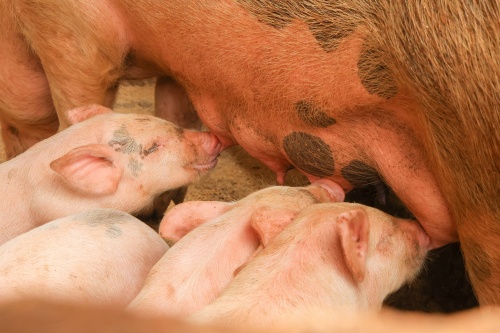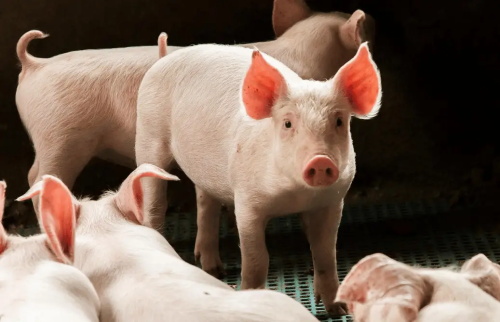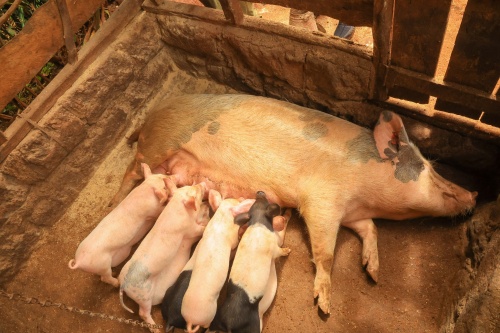According to a new study in the United States, African swine fever virus (ASFv) can be transmitted orally through water and feed, although higher doses are required for infection in plant-based feed.
This is the research conclusion of a team of scientists from Kansas State University. A research team led by Dr. Megan Niederwerder, Assistant Professor of Diagnostic Medicine and Pathology, studied how ASF virus spreads in feed and feed components. The study was published in the journal "Emerging Infectious Diseases" by the Centers for Disease Control and Prevention (CDC) in the United States.
The required ASF level in liquid is very low
Dr. Niederwerder's research team found that the virus level required to cause liquid infections is extremely low, indicating that ASF has high infectivity through oral administration. Although higher concentrations of virus are required to cause infection through feed, frequent exposure may make contaminated feed a more important risk factor.
In the abstract of the paper, the team explained that they used a strain isolated in the Caucasus country of Georgia in 2007, and their aim was to determine the * * * small and median infectious doses of the strain through oral exposure to natural drinking and feeding behaviors.
The possibility of African swine fever infection in feed
At a press conference on the KSU website, Dr. Niederwerder (pictured) explained that "in collaboration with statistician Trevor Hefley, we were able to simulate the likelihood of African swine fever infection because over time, pigs consume a batch of contaminated feed. Even after 10 exposures or consuming 1 kilogram of contaminated feed, the likelihood of infection increases sharply. Multiple exposure modeling increases the applicability of our experimental data to possible scenarios on farms“
The abstract of this scientific article details the small infectious dose of ASFv in liquid at 10050% tissue culture infectious dose (TCID 50), compared to 104TCID 50 in feed. The median infectious dose is 10 1.0 TCID 50 (liquid) and 10 6.8 TCID 50 (feed).
Pig B-ultrasound machine
Reasons for investigating the relationship between African swine fever ASF and feed
In a peer-reviewed article, the team wrote in more detail that some outbreaks in Russia and China are sometimes difficult to explain, which led them to decide to conduct this special study: "The molecular characteristics of the virus isolates that invaded China and Siberia in the near future prove that they are similar to the Georgia 2007 ASFv strain. These outbreaks occurred in herds thousands of kilometers apart
In addition, a large high biosafety farm in Romania recently reported an ASFv invasion incident. The polluted water from the Danube River involved the introduction of ASF into approximately 140000 pig farms.
Contaminated feed, as a carrier of transmission for introducing cross-border animal diseases into the high biosafety pig business, has been considered a major risk factor since the introduction of Porcine Epidemic Diarrhea Virus (PEDv) into the United States in 2013. Lessons learned from PEDv emphasize the need to quantify the risks of introducing other cross-border animal diseases into feed“
Dr. Niederwerder also recently studied the modulation of the pig microbiome - she described the progress of pigs in the special topic of intestinal health
Drying feed crops on the road
At the press conference, Dr. Niederwerder stated that this study is the first to demonstrate that ASF can be easily transmitted through the natural consumption of contaminated feed and liquids. Therefore, the correlation of this discovery is difficult to overestimate, as the agricultural processing methods of feed raw materials may pose a risk of contamination. This news article mentioned the common practice of Chinese people to plant crops on the road, which may be polluted by the traffic of trucks containing infected pigs. The processing components on contaminated equipment may be another possible source for spreading virus particles.
Dr. Niederwerder explained on the KSU website that "millions of kilograms of feed materials are imported from countries where African swine fever virus is currently spreading." In this regard, she mentioned early work that demonstrated various feed ingredients promote virus exposure to simulated cross-border transportation environmental conditions.
Read more about African swine fever in our health tools
Subsequent steps in the study of African swine fever ASF
The next step for the team will be to identify methods to reduce or eliminate this risk, including chemical additives, storage time, heat treatment, or other steps.
Dr. Niederwerder said, "African swine fever may be a serious threat to the global pig farming industry. Without effective vaccines or treatments, preventing the introduction of the virus is a major goal for countries without this disease. We hope this study will further identify possible routes of disease transmission and develop mitigation strategies to prevent its introduction into the US pig population.









